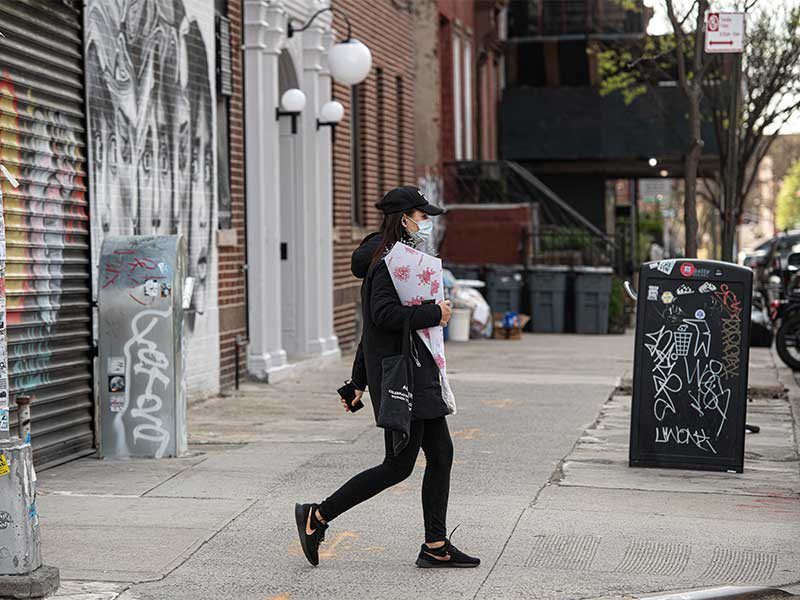Coronavirus Update : McKinsey Report On The State of Fashion
Coronavirus Update : Even before the coronavirus disrupted financial markets, upended supply chains, and crushed consumer demand across the global economy, fashion-industry leaders were not optimistic about 2020. The industry was already on high alert, and executives expressed pessimism across all geographies and price points in our annual report, The State of Fashion 2020, released late last year. But fast-forward a few months, and fashion’s outlook has gotten dramatically and suddenly bleaker. The industry is now on red alert.

Coronavirus Update: McKinsey Report On The State of Fashion
This unforeseeable humanitarian and financial crisis has rendered previously planned strategies for 2020 redundant, leaving fashion businesses exposed or rudderless as their leaders confront a disorienting future and vulnerable workers face hardship and destitution. With this special coronavirus update to The State of Fashion 2020, we have taken a stance on what our new normal will look like in the aftermath of this “black swan” event to provide insights (from analyzing surveys, data, and expert interviews) for fashion professionals as they embark on the 12- to 18-month period after the dust settles.
The Black Swan and Fashion
COVID-19 could spur the biggest economic contraction since World War II, hitting every sector from finance to hospitality. Yet fashion, because of its discretionary nature, is particularly vulnerable. The average market capitalization of apparel, fashion, and luxury players dropped almost 40 percent between the start of January and March —a much steeper decline than that of the overall stock market.
Humanitarian repercussions are expected to outlast the pandemic itself. Dire consequences for fashion, one of the biggest industries in the world, generating $2.5 trillion in global annual revenues before the pandemic, entails joblessness or financial hardship for people across the value chain.
We estimate that revenues for the global fashion industry (apparel and footwear sectors) will contract by 27 to 30 percent in 2020 year-on-year, although the industry could regain positive growth of 2 to 4 percent in 2021 (compared with the 2019 baseline figure). For the personal luxury goods industry (luxury fashion, luxury accessories, luxury watches, luxury jewelry, and high-end beauty), we estimate a global revenue contraction of –35 to –39 percent in 2020 year-on-year, but positive growth of 1 to 4 percent in 2021 (compared with the 2019 baseline figure). If stores remain closed for two months, McKinsey analysis approximates that 80 percent of publicly listed fashion companies in Europe and North America will be in financial distress. Combined with the McKinsey Global Fashion Index (MGFI) analysis, which found that 56 percent of global fashion companies were not earning their cost of capital in 2018, we expect a large number of global fashion companies to go bankrupt in the next 12 to 18 months.
The interconnectedness of the industry is making it harder for businesses to plan ahead. Just as China inched through recovery, outbreaks worsened in Europe and the United States. But it is in the developing world, where healthcare systems are often inadequate and poverty is rife, that people will be hit the hardest. For workers in low-cost sourcing and fashion-manufacturing hubs, such as Bangladesh, Cambodia, Ethiopia, Honduras, and India, extended periods of unemployment will mean hunger and disease.
The crisis is affecting daily lives, instilling anxiety and uncertainty in the minds of almost everyone. Indeed, consumer pessimism about the economy is widespread, with 75 percent of shoppers in Europe and the United States believing that their financial situation will be affected negatively for more than two months.
Although the duration and ultimate severity of the pandemic remains unknown, it is apparent that the fashion industry is just at the beginning of its struggle. By causing blow after blow to both supply and demand, the pandemic has brewed a perfect storm for the industry: a highly integrated global supply chain means that companies have been under immense strain as they have tried to manage crises on multiple fronts as lockdowns were imposed in rapid succession, halting manufacturing in China first, then Italy, followed by countries elsewhere around the world.
A freeze on spending is aggravating the supply-side crisis. Widespread store closures for an industry reliant on offline channels, coupled with consumer instinct to prioritize necessary over discretionary goods, hit brands’ bottom lines and depleted cash reserves. Even online sales have declined 15 to 25 percent in China, 5 to 20 percent across Europe, and 30 to 40 percent in the United States.
Once the dust settles
Once the dust settles on the immediate crisis, fashion will face a recessionary market and an industry landscape still undergoing dramatic transformation. The exhibit unpacks five areas that could see significant changes; the full report explores these areas in greater depth. We expect a period of recovery to be characterized by a continued lull in spending and a decrease in demand across channels. As noted in our previous articles on “getting woke,” radical transparency, and sustainability first, the consumer mindset was already showing signs of shifting in certain directions before the pandemic.








